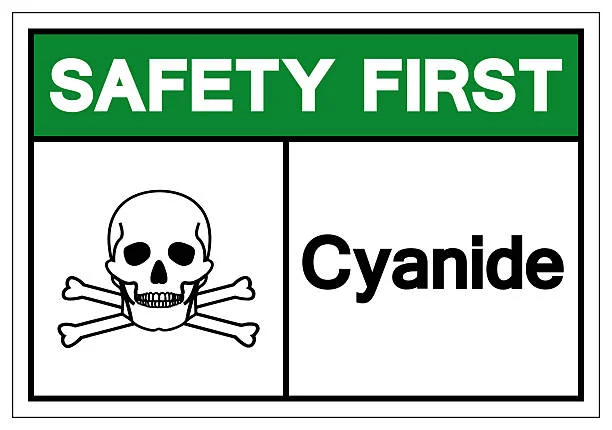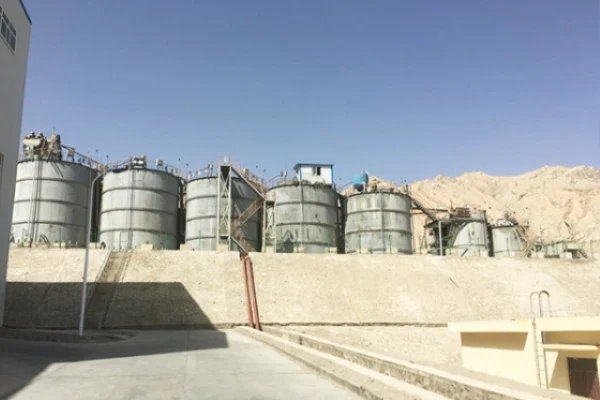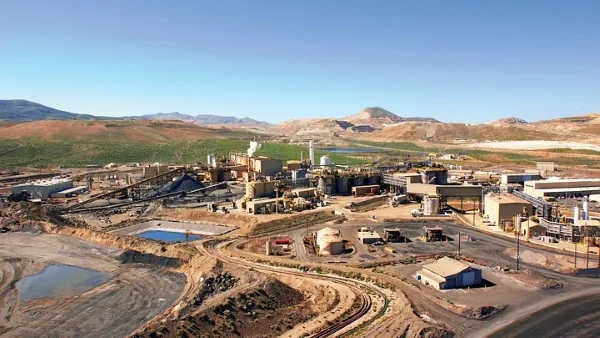
Introduction
The extraction of gold and copper from gold-copper ores is a complex process. Cyanidation, especially using Sodium Cyanide, has long been a dominant method for gold extraction. However, the presence of copper in these ores poses significant challenges to the cyanidation process, affecting both gold recovery and cyanide consumption. This blog post delves into the optimization of sodium Cyanide Leaching in gold-copper ores, exploring the underlying principles, challenges, and innovative solutions.
Principles of Cyanide Leaching
Cyanide leaching relies on the unique ability of cyanide ions to form stable complexes with gold and silver. Sodium cyanide, which is highly soluble in water and relatively stable, serves as the primary lixiviant. When dissolved in water, it releases cyanide ions. These ions react with gold in the presence of oxygen through an electrochemical process. Gold is first oxidized and then bound by the cyanide ions to form a soluble complex, allowing for its extraction from the ore.
Challenges Posed by Copper in Gold-Copper Ores
Increased Cyanide Consumption
Copper in gold-copper ores reacts with cyanide to create various copper-cyanide complexes. For every 1% of reactive copper present, approximately 30 kg/t of NaCN can be consumed. This substantial consumption not only drives up the operational costs of the cyanidation process but also necessitates more careful management of cyanide usage.
Inhibition of Gold Leaching
High concentrations of copper-cyanide complexes in the leaching solution can decelerate the dissolution of gold. Moreover, copper has the tendency to form passivation layers on the surface of gold particles. These layers act as barriers, reducing the contact between gold and cyanide ions and thereby hindering the extraction process.
Strategies for Optimizing Sodium Cyanide Leaching in Gold-Copper Ores
Pretreatment of Ores
Physical Separation Methods: Techniques like gravity separation, flotation, or magnetic separation can be applied to pre-concentrate the ore. By selectively removing a significant portion of copper minerals before cyanidation, these methods decrease the copper content in the material that will undergo leaching. For example, flotation can separate copper sulfide minerals from the gold-bearing ore, minimizing copper interference during cyanidation.
Oxidative Pretreatment: Oxidative processes such as roasting, bio-oxidation, or pressure oxidation are effective in breaking down sulfide minerals and liberating the enclosed gold. In the context of gold-copper sulfide ores, oxidative pretreatment not only enhances gold recovery but also reduces the negative impact of copper on cyanidation. Roasting, for instance, converts sulfide minerals into oxides, making the gold more accessible to the cyanide leaching process.
Process Parameter Optimization
Cyanide Concentration: Determining the ideal cyanide concentration is key. While higher concentrations might boost gold dissolution, they also lead to excessive cyanide consumption, especially in the presence of copper. A balanced approach is required, and in some cases, using a lower cyanide concentration along with other additives can yield better results.
pH Control: Maintaining the right pH level (usually around 9 - 12) in the leaching solution is crucial for the cyanidation process. In gold-copper ore leaching, adjusting the pH can help control the dissolution rates of both copper and gold. Slightly lowering the pH can sometimes enhance gold leaching by suppressing copper leaching.
Temperature and Agitation: Raising the temperature can speed up the cyanide leaching reaction, but it has its limits. Excessive heat can increase cyanide volatility and accelerate its oxidation into less reactive substances. Adequate agitation is necessary to ensure good contact among the ore particles, cyanide solution, and oxygen. However, overly vigorous agitation can cause excessive wear and tear on the equipment.
Use of Additives
Ammonia: Adding ammonia to the cyanidation process can help manage copper by forming stable complexes with it. These complexes prevent the formation of certain copper-cyanide compounds that inhibit gold dissolution. However, the use of ammonia requires careful consideration due to its toxicity and volatility, which pose environmental risks.
Glycine: Recent research indicates that glycine can be used in combination with low concentrations of cyanide to extract gold, silver, and copper from gold-copper ores. Glycine complexes with both cupric and cuprous ions, promotes copper dissolution, and can dissolve the passivation layers on gold and copper surfaces. This approach can significantly reduce cyanide consumption by at least 75%.
Case Studies
A Japanese Mining Operation
A small mining operation in Japan was working on maximizing gold recovery from copper-rich ore using cyanidation. In a previous cyanidation cycle with 800 tons of dust (gold tailings), they recovered 1.3 kilos of 94% pure gold after elution. To improve recovery, they used lime to increase the pH and ammonia to help remove copper. Additionally, they performed copper elution from the carbon before gold elution and adjusted the voltage and amperage during gold elution and electrodeposition. These measures helped in increasing the gold recovery.
Australian Low-Grade Copper-Gold Ore
An Australian low-grade copper-gold ore was processed using a “mixed flotation—copper-sulfur separation—sulfur concentrate leaching for gold” process. By optimizing the flotation reagents (using a combination of butyl xanthate and ammonium dibutyl dithiophosphate as collectors) and the process flow (multiple stages of roughing and scavenging in a closed circuit), they achieved a copper recovery of 82.46% and a comprehensive gold recovery of 91.87%.
Conclusion
Optimizing the sodium cyanide leaching process in gold-copper ores is essential for improving the economic viability and environmental sustainability of gold mining. By understanding the challenges posed by copper and implementing strategies such as pretreatment, process parameter optimization, and the use of additives, significant improvements in gold recovery and cyanide consumption can be achieved. Future research in this area will likely focus on developing more efficient and environmentally friendly methods, further reducing the impact of gold-copper ore processing on the environment while maximizing resource extraction.
- Random Content
- Hot content
- Hot review content
- China factory Sulfuric Acid 98%
- Sodium Isobutyl Xanthate SIBX 90%
- 99.5% min Ammonium Chloride For Industrial Use
- Barium carbonate 99% powder
- Fertilizer magnesium sulfate/magnesium sulfate monohydrate
- Sodium sulphate 99% Pharmacy Grade
- Lithium chloride, 99.0%,99.5%
- 1Discounted Sodium Cyanide (CAS: 143-33-9) for Mining - High Quality & Competitive Pricing
- 2China's New Regulations on Sodium Cyanide Exports and Guidance for International Buyers
- 3Sodium Cyanide 98% CAS 143-33-9 gold dressing agent Essential for Mining and Chemical Industries
- 4International Cyanide(Sodium cyanide) Management Code - Gold Mine Acceptance Standards
- 5China factory Sulfuric Acid 98%
- 6Anhydrous Oxalic acid 99.6% Industrial Grade
- 7Oxalic acid for mining 99.6%
- 1Sodium Cyanide 98% CAS 143-33-9 gold dressing agent Essential for Mining and Chemical Industries
- 2High Quality 99% Purity of Cyanuric chloride ISO 9001:2005 REACH Verified Producer
- 3Zinc chloride ZnCl2 for High Molecular Weight Polymers Initiator
- 4High Purity · Stable Performance · Higher Recovery — sodium cyanide for modern gold leaching
- 5High Quality Sodium Ferrocyanide / Sodium Hexacyanoferr
- 6Gold Ore Dressing Agent Safe Gold Extracting Agent Replace Sodium Cyanide
- 7Sodium Cyanide 98%+ CAS 143-33-9











Online message consultation
Add comment: